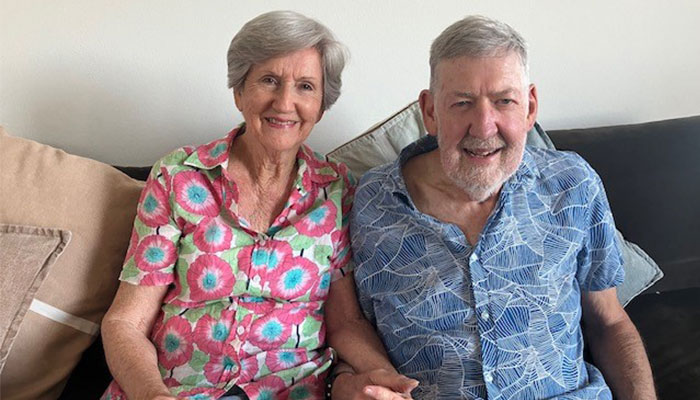Researchers at Macquarie University hope the combination of the antibiotic doxycycline and the cough medicine ambroxol may even stop dementia with Lewy bodies (DLB) in its tracks.

Hope: Professor Simon Lewis, pictured above, is leading a world-first trial that may lead to a treatment for dementia with Lewy bodies (DLB) which affects around 20 per cent of Australian dementia patients.
DLB is the after Alzheimer’s disease, and has a much more aggressive and swift course of progression.
It is closely related to Parkinson’s disease, with symptoms including problems with thinking and movement, as well as changes in mood, sleep disturbances, hallucinations, and losing the sense of smell.
Macquarie University Professor of Cognitive Neurology, Simon Lewis specialises in degenerative diseases of the brain, including DLB and Parkinson’s disease.
“Dementia with Lewy bodies is more common than most people realise, because the overlap of symptoms with other conditions means it is commonly misdiagnosed,” Professor Lewis says.
“About 20 per cent of Australian dementia patients are likely to have DLB rather than Alzheimer’s, and some people with DLB may even be misdiagnosed as having Parkinson’s.
“In some cases, the hallucinations and mood disruptions may lead people to believe they have a mental health condition, as was the case with actor Robin Williams, who sadly was not diagnosed with DLB until after his death in 2014.
“Early diagnosis is vital, as misdiagnosed patients may be given inappropriate treatments and miss out on critical support, which has a huge impact both on their quality of life and their prognosis.”
Until recently, the only way to conclusively prove DLB was at autopsy, but blood tests are now being developed to diagnose the disease in living patients.
In the meantime, Professor Lewis says three telltale symptoms can be useful for confirming DLB in patients with dementia: acting out dreams (for example, punching or kicking while asleep), the loss of the sense of smell, and physical changes such as a shuffling gait or tremor.
People with these symptoms are likely to be experiencing DLB and could be eligible to take part in .
Protein build-ups linked to neurodegeneration
Abnormal build-ups of naturally occurring proteins in brain cells have been shown to be associated with a number of neurodegenerative diseases, including Alzheimer’s, frontotemporal dementia, motor neurone disease, Parkinson’s and DLB.
Lewy bodies are clusters of the protein alpha-synuclein in dying brain cells that can be seen through the microscope in post-mortem tissue in both DLB and Parkinson’s.
In the lab, the antibiotic doxycycline has been shown to prevent alpha-synuclein from forming these damaging clumps in the first place; the anti-mucosal ambroxol, which is used to treat coughs, boosts the production of an enzyme that can clear clusters of this protein.
In the current phase II clinical trial, it is hoped the combination of the two drugs will attack on both fronts, slowing or even stopping the progression of DLB in people who are already experiencing symptoms.
Participants take five pills a day – three in the morning and two at night – over six months. Three out of four patients will receive the active treatment, with one in four receiving a placebo.
Baseline blood tests and medical and cognitive assessments are carried out before starting the trial, and further testing is done after the intervention is complete.
A cruel disease
Bruce Wilson, 75, was diagnosed with DLB nearly ten years ago, and joined the trial earlier this year.

Helping others: DLB sufferer Bruce Wilson, pictured above with wife Judith, is taking part in Professor Lewis’ trial to help find a potential treatment for the disease which is the second most common form of dementia.
His wife, Judith, says initially he was thought to have Parkinson’s disease, but they soon realised his symptoms might suggest another condition.
“We could see his mental capacity was changing, which is not usually a symptom of Parkinson’s, and he didn’t have some of the other common symptoms,” Mrs Wilson says.
“We are lucky because his progression has been relatively slow, but he still had to give up work as a mechanical draftsman. He can’t drive any more, and he has lost hobbies that he used to love, like kayaking and fixing things.
“He used to be very social and enjoyed spending time with a large group of friends, but it has made that difficult because his thought processes have slowed down, and often people can’t wait for him to finish a sentence.
“We thought it was important to take part in this trial, because even if it can’t help Bruce, we hope it might be able to help other people.”
How to join the clinical trial
Anyone who is interested in taking part in this trial is invited to contact the clinical trial coordinator by email at
is a Professor of Cognitive Neurology at Macquarie Medical School.








